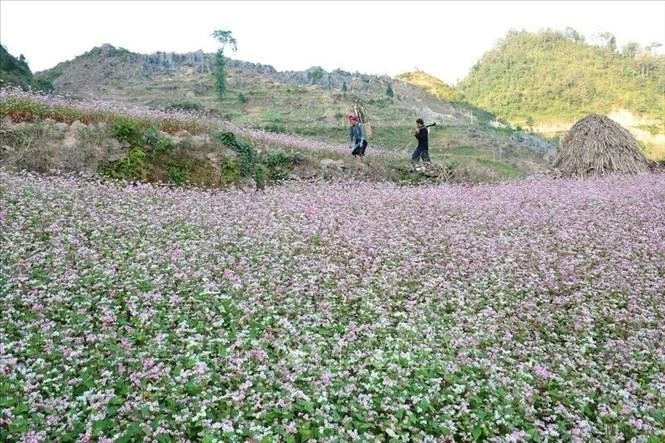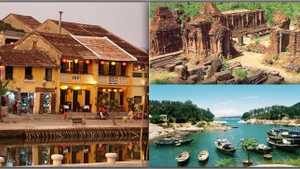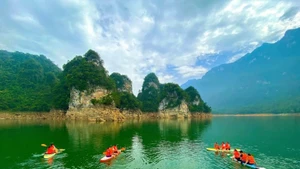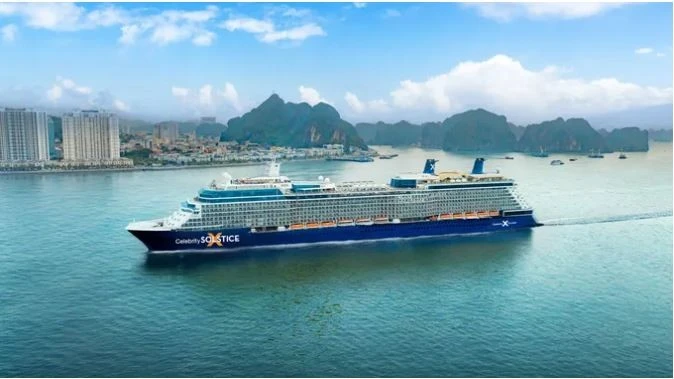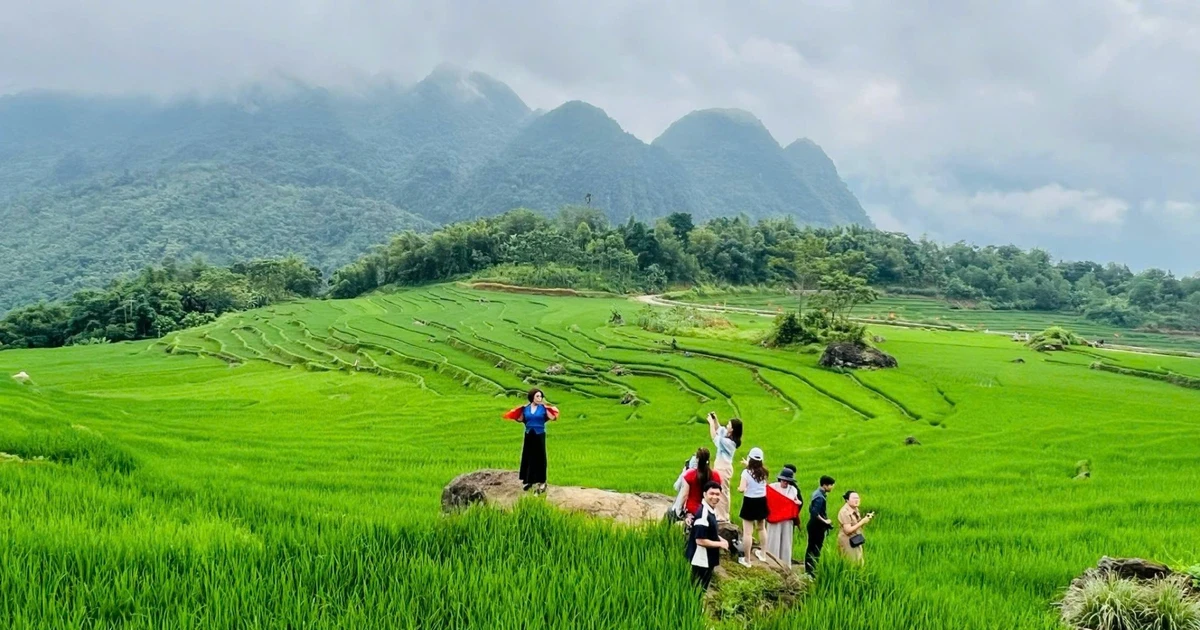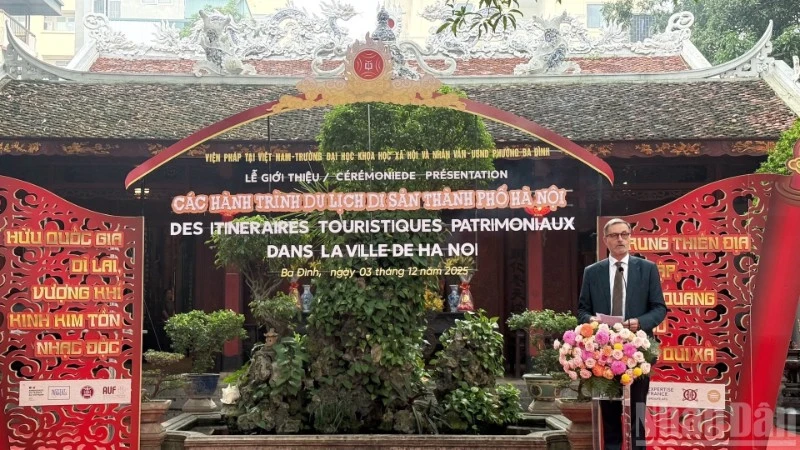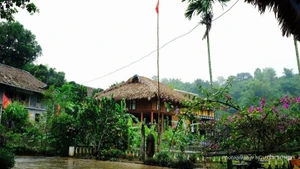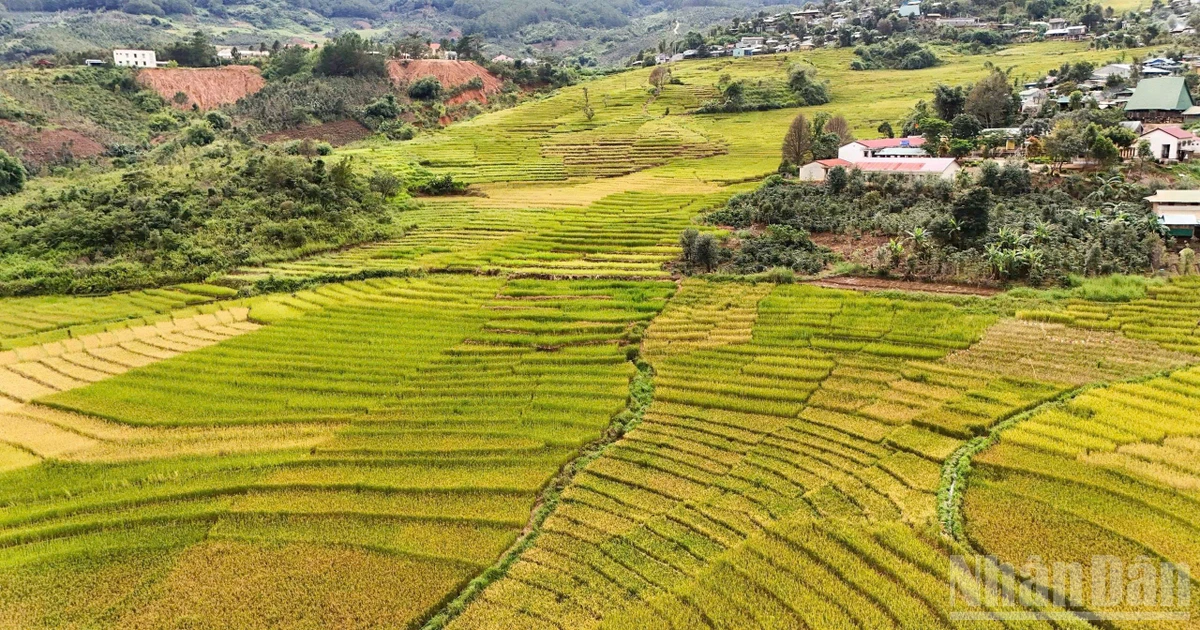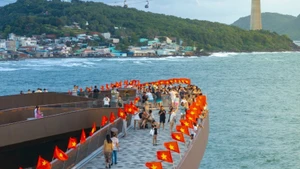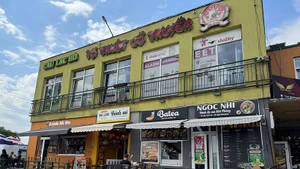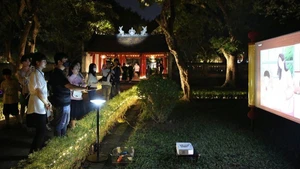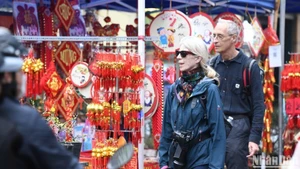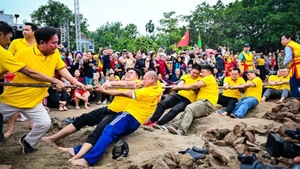At that moment, all the fatigue from the waves suddenly disappears, giving way to excitement mixed with pride — we are setting foot on a cluster of outpost islands, where the army and people guard the sacred sovereignty of the Fatherland day and night.
Outpost islands greet the new day
Nam Du Archipelago belongs to the Kien Hai Special Zone of An Giang Province, more than 100km southeast of the Rach Gia coast. The entire archipelago has 21 islands. The people here are mainly involved in fishing, aquaculture, and tourism services.
Seen from the deck of the ship, Nam Du is as beautiful as a watercolour painting. The green mountains on Hon Lon cast their shadows on the sea, the white sand beaches curve, the clear blue water seems to be able to see all the way to the bottom. Tourists who have been here still tell each other that Bai Men, Bai Ngu, Hon Mau, Hon Nom, etc. all remind them of the landscape of Ha Long Bay in the north. Therefore, Nam Du is known as “Ha Long of the South”.
Hon Lon is the central island of the archipelago, appearing as a towering natural landmark, signalling that the voyage has reached Nam Du. The closer the ship gets, the clearer the shape of Hon Lon becomes; the mountain slope stretches out, the roofs of houses loom at the foot of the mountain, Bai Ngu curves around the wharf like a warm embrace welcoming visitors from far away.
When the ship docks, the bustling pace of life on the outpost island appears with fishing boats anchored close together with colourful painted shells, small shops by the bustling port, rows of motorbikes lined up ready to take tourists around the island. In front of Nam Du Border Guard Station, the red flag with yellow star and hammer and sickle flag flutter proudly and brilliantly against the clear blue sky and sea.
Nam Du Archipelago belongs to the Kien Hai Special Zone of An Giang Province, more than 100km southeast of the Rach Gia coast. The whole archipelago has 21 islands. The people here are mainly engaged in fishing, aquaculture, and tourism services.
Stepping onto the island, right near An Son Wharf, a memorial was erected to commemorate nearly 500 fishermen who died in storm No.5 in 1997 (also known as storm Linda), which had a severe impact on the southern provinces, including the An Son and Nam Du areas. The storm, which destroyed houses, boats, and infrastructure, causing many losses of life and property, used to be a haunting memory for the people here. In the strong sea breeze, we stood silently before the stone stele, listening to the stories told by the people. The storm swept through at night, hundreds of boats were sunk or damaged, many families never found their loved ones. That pain became an indelible memory, at the same time reminding today’s generation of the strength of solidarity and resilience at sea.
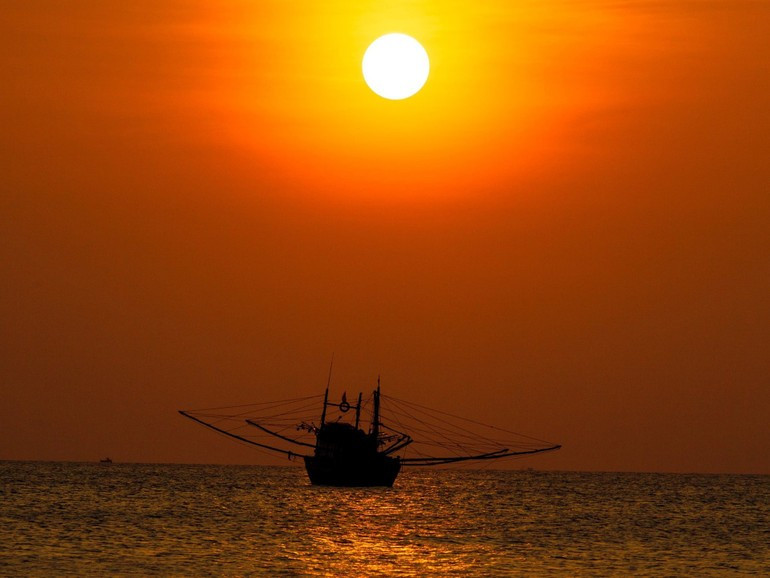
According to comrade Ly Van Quyen, Secretary of the Party Committee of An Son sub-region where we visited, Nam Du Archipelago currently has nearly 5,000 people, with more than 1,100 households, living on 11 out of 21 islands. Previously, the area was divided into four communes, now arranged into two remaining communes: An Son and Nam Du. The education system on the island now has three levels: preschool, primary, and secondary school.
However, due to many difficulties, most secondary school students conduct study in the form of continuing education; teachers are all from the mainland on long-term work trips to the island. The national grid has not yet reached Nam Du; people mainly use generators for daily activities. In return, the high-speed ferry connecting Nam Du with Rach Gia has brought the island closer to the mainland, opening opportunities for the development of tourism, services, and trade.
The bond between the army and the people is blood-tight
As one of more than 150 islands in the southwest sea of the Fatherland, Nam Du is not only beautiful but also carries a special responsibility for national defence and security. On the top of the high mountain, Radar Station 600 of Regiment 551, Naval Region 5 is like a “divine eye” guarding the southwest sea of the Fatherland. Here, each signal from the radar is a trust sent to the mainland; each flag on the island is a sovereignty marker.
The road leading to the station is winding and steep, both sides are covered with green forests. In the dry season, the sun is like fire, but everyone tries to climb the slope to visit the officers and soldiers here. Welcoming us are the tanned faces with clear and steadfast eyes of the young soldiers. Major Dinh Quoc Chon, the station chief, shared: “The conditions on the mountain top are very harsh. Fresh water must be saved drop by drop, green vegetables are always in short supply, and the wind is constant. But thanks to the attention of the Party and State and support from the mainland, the soldiers' lives have gradually seen significant improvement.”
Indeed, entering the station's vegetable garden, we could not help but be surprised. The rows of green vegetables stretched out under the roof — a project worth 400 million VND donated by the Ho Chi Minh City Party Committee. “This is not only green vegetables, but also the affection sent to the island by the home front,” a soldier excitedly exclaimed when we visited.
Every year, the army and people on Nam Du Island receive the attention of the people of Ho Chi Minh City and the Navy. During this trip, the delegation of the Ho Chi Minh City Party Committee brought to Nam Du many meaningful gifts, such as equipment for daily life, national flags, maps of Viet Nam, water purifiers, televisions, necessities, seeds, and more. Furthermore, the delegation also visited 12 policy families and gave gifts to children on the island. The gifts, though simple, were full of affection, contributing to giving strength to the army and people on the remote island, helping people feel secure in doing business, living, and working with the forces to protect the homeland's sea and islands.
Besides Radar Station 600, on the island there are also Nam Du Border Guard Station; Nam Du Lighthouse Station; Maritime Port Authority; and An Son Primary School, Secondary School, and Kindergarten. All join hands with the islanders to form a complete battle formation, both developing the economy and protecting the sovereignty of the sea and islands.
During the working session on the island, Rear Admiral Do Van Yen, Standing Member, Deputy Political Commissar of the Navy, the head of the working delegation, kindly addressed the officers and soldiers: “I wish you good health and solidarity, and that you always complete the assigned political tasks well.” The wishes were short but contained faith and expectation, as if adding strength to the soldiers at the forefront.
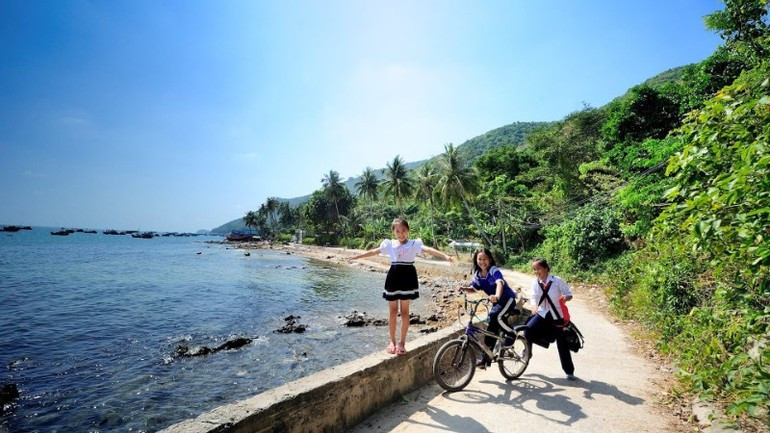
Life in harmony with the country
In Nam Du, the military-civilian relationship is present in every small detail. We witnessed everyone joining in the atmosphere of the meeting, they happily welcomed the working group, there was no distance between the rear and the front. Amidst the sound of the waves lapping the ship, songs about the sea and the country were sung, blending with the laughter of the soldiers, the working group and the islanders. I suddenly realised that it was this close bond that creates the strength to protect the island and the sea.
We walked to An Son Market, a small market which looks like a spontaneous market on the mainland but lacked nothing, featuring seafood, meat, vegetables, fruits, and so on. The prices were not expensive, the seafood was both delicious and cheap. Hearing that the tofu here is homemade and very delicious, journalist Hoang Ha immediately invited me to buy some to try on the boat. I laughed and teased my colleague: “Ha Noi’s tofu is also this delicious!”
To compare, I asked Duy Phuong, a close friend who had been to Nam Du when there were almost no tourists. Phuong said that Nam Du is now very different from the memories of more than ten years ago, when he first set foot on the island. “There used to be very few tourists, now it is much more bustling and crowded. Nam Du is still beautiful, like a girl who knows how to put on makeup, but I still prefer the pure feelings of the past,” Phuong shared.
Indeed, in recent years, Nam Du has welcomed large numbers of tourists to visit and experience the area. As a result, the island cannot avoid problems such as waste, noise, etc. However, the cuisine here still retains its own appeal — fresh, rich seafood at affordable prices. Along the port are rows of restaurants, visitors can freely choose their favourite dishes without worrying about the price. The accommodation system is also diverse, from homestay to resort, with room prices ranging from 1-3 million VND per night.
Huynh Van Loi, Vice Chairman of Kien Hai Special Zone, said: “Since the merger, Kien Hai Special Zone has only been in operation for three months, but the government apparatus quickly stabilised and has been operating smoothly. The special zone government always strives to ensure that administrative procedures for people and businesses are handled more conveniently and effectively.”
In the late afternoon, the ship left An Son Wharf, taking us on our journey to other islands. Looking back, Nam Du gradually receded in the sunset, with only the red flag with a yellow star fluttering brightly against the pale purple sky. Nam Du today is not only an attractive tourist destination, but also a symbol of the will and strength of the great solidarity between the army and the people. The presence of naval and border guards, the steadfast spirit of the people sticking to the sea, and the support from the rear of the whole country, all blending together to create a solid wall to protect the sovereignty of the southwestern sea and islands of the Fatherland.

